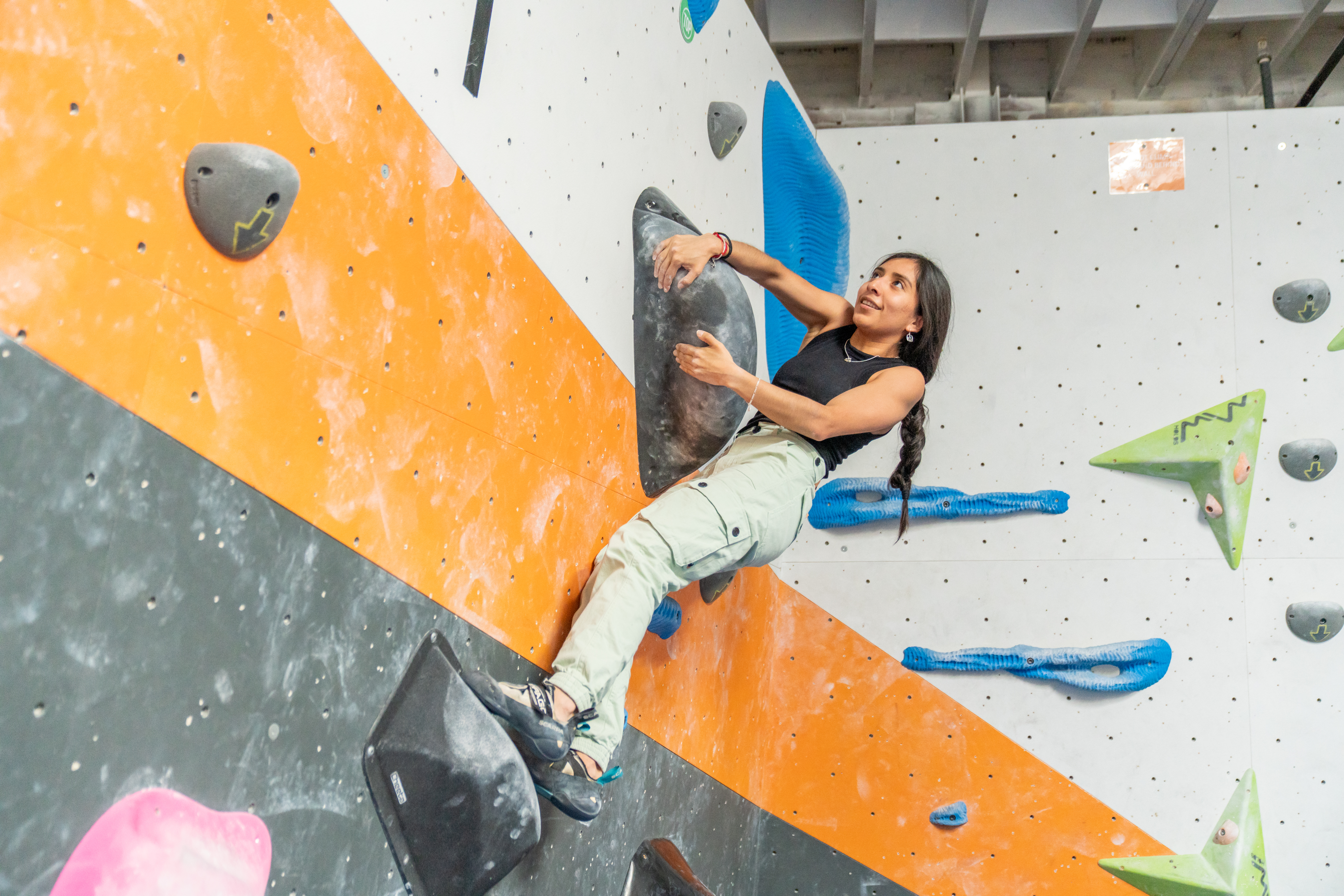5 Climbing Techniques and How to Use Them
Whether you’re new to climbing or looking to refine your technique, mastering fundamental climbing skills can make a huge difference in your confidence and performance. In this blog, we’ll explore five essential climbing techniques—Directional Holds, Smearing, Flagging, Mantles, and Heel Hooks—and how they can transform your climbing experience.
1. Directional Holds
What It Is: Directional holds involve pulling or pushing on a hold in a specific direction to maximize friction and maintain stability.
How to Use It: Observe the orientation of the hold. If it’s a side pull, lean your body away from the wall to counterbalance the force. For underclings, focus on pulling upward while keeping your feet secure. If it’s a gaston, push outward with your hand while engaging your core and legs to maintain balance.

Why It’s Important: Using holds directionally reduces the strain on your hands and arms, allowing for better efficiency and reduced fatigue.
How to Practice: Try traversing a climbing wall while intentionally using holds in different directions. Practice side pulls, underclings, and gastons to understand how body positioning affects your grip.
2. Smearing
What It Is: Smearing involves pressing the rubber of your climbing shoes directly against the rock or wall for friction.
How to Use It: Engage your toe box or midfoot on the wall and apply consistent pressure. Bend your knees and trust your feet, even if it feels slippery.

Why It’s Important: Smearing is crucial on slab climbs and routes with minimal footholds, giving you better traction and control.
How to Practice: Find a slab wall or route with minimal holds. Focus on maintaining balance and trust in your feet by smearing up the surface without using your hands excessively.
3. Flagging
What It Is: Flagging is a technique of extending one leg out to the side or behind your body for balance, aiding in maintaining stability during climbs.
How to Use It: When climbing, look for moments where your body may feel off-balance. Extend your leg in the opposite direction of your center of gravity to counteract the weight shift.

Why It’s Important: Flagging helps maintain control, reduces unnecessary movement, and allows you to conserve energy during technical climbs.
How to Practice: Climb a route with deliberate pauses to analyze your balance. Experiment with flagging your leg in different directions to feel how it stabilizes your body.
4. Mantles
What It Is: Mantling involves pushing down on a hold to elevate your body, allowing you to bring your feet up and stand on the same hold.
How to Use It: Place your palms flat on the hold and push down as if you’re getting out of a swimming pool. Bring one foot up to step onto the hold as you shift your weight upward. Mantling can also involve high feet or high heels to help you rock your weight over the lip/hold

Why It’s Important: Mantling is essential for topping out boulders or overcoming ledges where pulling alone won’t suffice.
How to Practice: Set up a low ledge or boulder problem and practice pressing down with your hands while stepping up with your feet. Repeat until the motion feels fluid.
5. Heel Hooks
What It Is: A heel hook involves using the back of your heel to hook onto a hold for stability, to generate upward momentum, or to maintain position on overhanging sections.
How to Use It: Find a hold above or level with your body. Hook your heel onto the hold and engage your hamstring and core muscles to pull your body closer to the wall.

Why It’s Important: Heel hooks are crucial for steep routes, overhangs, and moves requiring counterpressure to stay secure.
How to Practice: Find an overhanging route or training board. Practice hooking your heel onto holds and using your core to maintain tension and stability.
Ready to take your skills to the next level?
Next time you’re at the gym or the crag, challenge yourself to incorporate these techniques into your climbing. Pick one or two to focus on during a session, and see how it transforms your approach to different routes.
Or practice with us! Movement offers Intro & Intermediate Technique classes designed to help you refine your skills and progress in your climbing journey!

